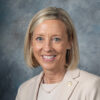EDUCATION MATTERS
By Larry Lee
A new summary of activity in 2014 under the Alabama Accountability Act offers more evidence that the promise the legislation would help students in poorly-performing schools was more smoke and mirrors than anything else. The summary is posted on the Alabama Department of Revenue website.
Nor does it support the claims of Senate Pro Tem Del Marsh that there is an urgent need to increase the limit on SGO contributions from $25 million annually to $30 million or that scholarships for private schools should be as much as $10,000, measures that are in a Marsh-sponsored amendment signed by Governor Bentley June 9. (SGO donors get a dollar for dollar Alabama tax credit. Each dollar contributed is one that does not go into the Education Trust Fund.)
There are nine SGOs in Alabama. However, three had not submitted an annual report by June 8 and another said they had no activity in 2014. The Rocket Ship Scholarship fund in Huntsville raised $128,720 but did not award any scholarships. In all, $13,311,357 was raised.
SGOs that awarded scholarships in 2014 were: Scholarships for Kids of Birmingham; Alabama Opportunity Scholarship Fund of Birmingham; AAA Scholarship Foundation of Prattville; and Beacons of Hope of Birmingham. They awarded 5,776 scholarships and spent $1,412,654 for administration.
The two major “players” are Scholarships for Kids and Alabama Opportunity Scholarship Fund. (The latter is closely identified with former governor Bob Riley, though it is actually controlled by a Florida group.) When the accountability act was set up in 2013, Riley’s AOSF came out of the gate like triple crown winner American Pharaoh and collected $17.8 million from 25 donors. Scholarships for Kids raised $6.3 million in 2013.
But 2014 was a different story. Last year AOSF only collected $652,390 while Scholarships for Kids brought in $12,145,367. AOSF used their 2013 funds to award 3,608 scholarships at an average of $4,683 each. Scholarships for Kids gave out 2,076 scholarships at an average of $2,997.
These numbers immediately call into question why the Marsh amendment seeks to increase the cap to $30 million when only 53 percent of the max was reached last year. If the bar is set at 5 feet and no one can clear it, why raise it to 6 feet?
The same is true of setting scholarship limits at $6,000 for elementary students, $8,000 for middle and $10,000 for high school when the average scholarship awarded in 2014 was $4,072. (The state of Alabama contributed an average of $5,828 per pupil for all students in FY 2014. So Marsh and his supporters think private school students are worth considerably more than those attending public schools?)
A major question the report highlights is why did the Riley SGO go from collecting $17.8 million in 2013 to only $652,390 in 2014? (In fact, the summary shows AOSF spent $805,190 on “non-scholarship expenditures” last year, which was more than they collected.)
Marsh blamed this decline on the fact that AAA was ruled unconstitutional on May 28, 2014 and was in limbo the rest of the year awaiting an appeal to the state Supreme Court. The only problem with this logic is why did it not also apply to Scholarships for Kids or to AAA Scholarship Fund which increased donations by 91.4 percent and 200 percent respectively.
Apparently their 665 donors were unaware of the litigation.
But the most troubling new info pertains to who got scholarships. While AAA mandated that the state department of education identify “failing schools” and we were told that helping these schools and their students was the reason for the legislation, numbers do not support such a claim..
Of the 5,776 total scholarships given last year, 49.8 percent went to children previously enrolled in public schools. And only 29.4 percent were zoned to attend a failing school. But this number is misleading because it includes students who were already enrolled in a private school, but were zoned for a failing school. So we can not tell how many students who were actually attending a “failing school” got a scholarship to a private school.
The summary report also sounds an alarm as to how solvent the Riley SGO is at this point.
The accountability act states: “Once a student receives an educational scholarship under this program, the student shall remain eligible regardless of household income until the student graduates high school or reaches 19 years of age.”
So whatever amount of money an SGO uses for scholarships its first year, it has to raise approximately the same amount each year thereafter just to tread water. The Riley group did not do this. In fact, the summary shows they only had $699,898 available for scholarships at the end of 2014. But they needed enough to renew in the neighborhood of 3,500 scholarships.
An internal document from the Riley SGO written several months ago says that funds for 2015-16 scholarships should be on hand by May 1, 2015 in order to renew scholarships in a timely fashion. But considering that as of June 9, 2015 a total of only $10,917,582 has been donated to all SGOs so far this year, there is no way AOSF has enough funds on hand at present to fulfill its obligations or to meet its own deadline.
A tangled web for sure. And the fact that it hides behind the promise of helping our most vulnerable children makes it downright bizarre.
Larry Lee led the study, Lessons Learned from Rural Schools, and is a long-time advocate for public education. [email protected] read his blog: www.larryeducation.com























































